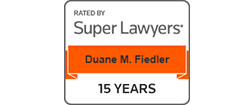What Is Stroke Malpractice?
Stroke malpractice refers to the failure of healthcare professionals to diagnose, treat, or manage a stroke properly, leading to significant patient harm or even death.
The Gravity of Timely Diagnosis
Strokes are medical emergencies that require prompt and accurate intervention, presenting a high-stakes scenario where timely and competent care is crucial. The early signs of a stroke can often be subtle and easily mistaken for other conditions. Common symptoms include sudden numbness or weakness, particularly on one side of the body, confusion, trouble speaking or understanding speech, vision problems, difficulty walking, dizziness, and severe headache.
Failure to recognize these signs can lead to catastrophic outcomes, as the quicker a stroke is diagnosed and treated, the better the chances of minimizing brain damage and improving recovery prospects.
Misdiagnosis
Diagnostic errors in stroke cases often involve the misinterpretation of symptoms or the failure to conduct necessary tests. For instance, a transient ischemic attack (TIA), often called a mini-stroke, may be dismissed as less serious due to its temporary nature. However, TIAs are critical warning signs of a potential full-blown stroke and require immediate attention. Misdiagnosis can also occur when symptoms overlap with other conditions, such as migraines, seizures, or intoxication. Proper use of diagnostic tools like CT scans and MRIs is essential in distinguishing a stroke from other medical issues. Neglecting to use these tools appropriately can constitute malpractice.
Delayed Treatment
Once a stroke is diagnosed, the prompt initiation of treatment is vital. For ischemic strokes, which are caused by blood clots, clot-busting medications like tissue plasminogen activator (tPA) must be administered within a narrow time window to be effective. Delays in administering tPA or other interventions, such as mechanical thrombectomy, can significantly worsen patient outcomes. In cases of hemorrhagic strokes, which involve bleeding in the brain, timely surgical intervention might be necessary to relieve pressure and prevent further brain damage. Any delays or errors in these critical treatments can be grounds for a malpractice claim.
Inadequate Aftercare
Malpractice is not limited to the initial diagnosis and treatment phases. Failure to provide appropriate follow-up care, physical therapy, or medication management can lead to preventable deterioration in a patient’s condition. Stroke patients often require extensive rehabilitation to regain lost functions and prevent complications such as infections, blood clots, or bedsores.
Stroke Malpractice Claims
Patients or their families can file lawsuits for medical negligence, seeking compensation for the harm caused. To succeed, they must prove that the healthcare provider’s actions deviated from the standard of care expected of them and directly resulted in injury or harm. These cases often involve complex medical and legal considerations, requiring expert testimony to establish the standard of care and demonstrate how it was breached.
Types of Compensation Available
When a stroke malpractice lawsuit is filed with the help of a White Plains medical malpractice attorney, the patient or their family can seek various types of compensation to address the losses and suffering caused by medical negligence. These compensations fall into three main categories: economic, non-economic, and punitive damages.
Economic Damages
Economic damages cover quantifiable financial losses, including:
- Medical Expenses: Includes past and future medical bills, such as hospital stays, surgeries, medications, and rehabilitation.
- Lost Wages: Compensation for missed work and future lost earning capacity if the patient cannot return to work or must take a lower-paying job.
- Out-of-Pocket Expenses: Covers additional costs like transportation for medical appointments, home care services, and home modifications.
Non-Economic Damages
Non-economic damages address intangible losses, such as:
- Pain and Suffering: Compensation for physical pain and emotional suffering due to the malpractice.
- Loss of Consortium: For the spouse or family’s loss of companionship and affection.
- Loss of Enjoyment of Life: Compensation if the patient’s ability to enjoy life’s activities is significantly impacted.
- Punitive Damages: Punitive damages are awarded in cases of particularly egregious or reckless behavior by the healthcare provider. These damages aim to punish the provider and deter similar conduct in the future.
 Because Relationships Matter
Because Relationships Matter 

















